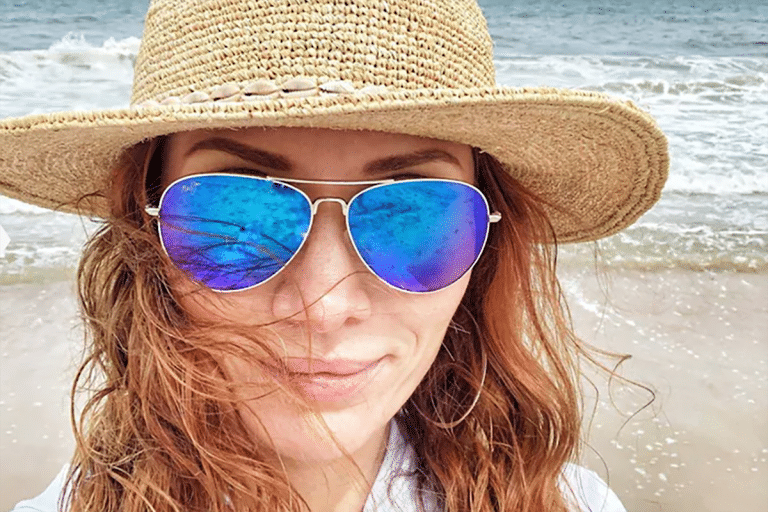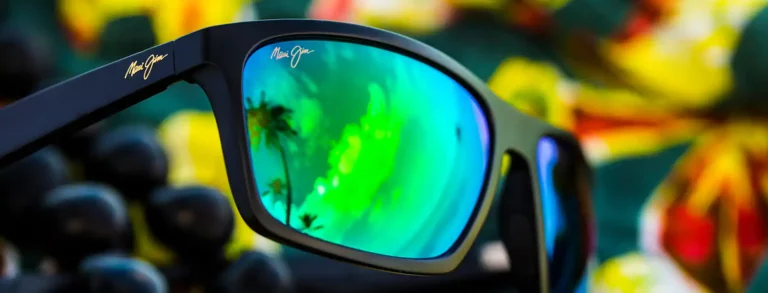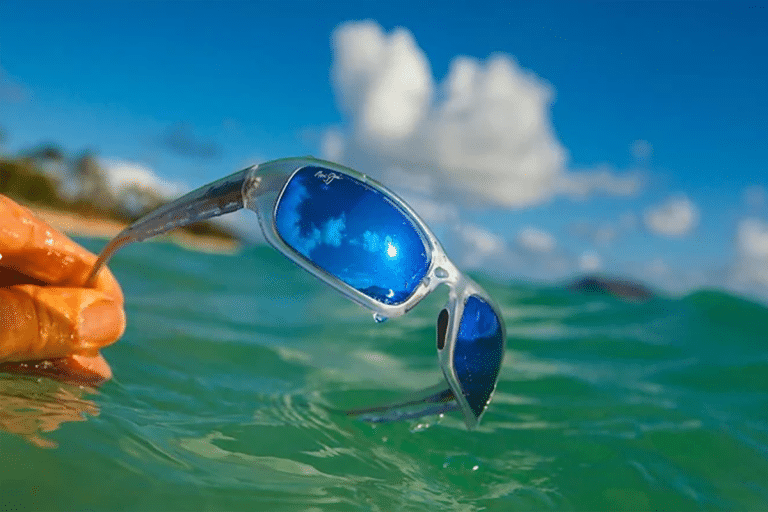
Sports sunglasses and protective eyewear are important because so many sports take place outdoors. It is necessary to ensure that you protect your eyes from sunlight, wind, dust and water but also ensure that your visual performance is not restricted but enhanced.
We stock a range of sports sunglasses suitable for prescription lenses.
Polarised lenses can improve clarity and reduce glare and therefore eye strain on sunny days.
Polarises lenses have a special inbuilt layer in the lens which filters light. The chemical’s molecules are lined up specifically to block some of the light from passing through the lens.
What you see with polarised lenses is a bit darker than usual, but objects look crisper and clearer, and details are easier to see. They are good for most situations but particular when you are outside for extended periods of time in the sun. People often say that they are less tired than usual when wearing polarised lenses.

Most cyclists like polarised lenses for the sharp contrast they provide. However, it is difficult to see LCD screens so if you are relying on a cycling GPS, you might struggle. Ideally you would buy glasses with interchangeable lenses, which you would swap depending on the weather conditions. Wrap sunglasses will give you the most protection from UV, dust and insects and other debris. On cloudy days, a yellow tinted lens is best as it provides the best contrast. On an average day, amber or rose tints work best. On a sunny day, you would do best with a grey lens. Grey is a good all purpose lens colour and allows you to see colour in its purest form.
Polarised lenses are definitely useful in skiing to reduce glare. In snowy environments, the UV light scatters everywhere making it very intense for your eyes. You want a wide or wrap style frame to prevent UV, wind and particles from reaching your eyes. Mirrored lenses are very good for bright sun as they allow less light through the lens. Lighter tints like yellow, green and rose are good for cloudy days. Darker tints like brown, grey and copper are best for sunny days. You can get clear lenses for night skiing.

Blue lenses are good for reducing the glare off the water on sunny days, or watching events outdoors. The blue enhances contours around objects.
Green lenses work well in all conditions and can reduce glare and brighten shadows.
Prescription sunglasses are really useful when playing golf. A wrap around frame also protects you from sun, wind and flying debris. Purple and blue lenses track the golf ball so you can see it clearly in the air and on the ground. Brown lenses improve contrast on sunny days but aren’t great for cloudy conditions.